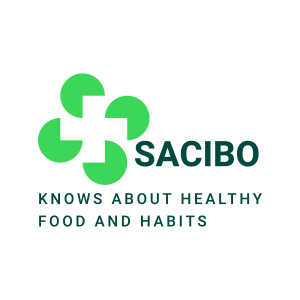- Home
- /
- Detox
- /
- Endocrine Disruptors
- /
- Endocrine Disruptors: the Silent...
Endocrine disruptors, a menacing group of chemicals, have gained increasing attention in recent years due to their potential to disrupt the delicate balance of hormones in our bodies. These substances, often found in everyday products and environmental pollutants, pose a significant threat to human health and the environment.
Understanding Endocrine Disruptors
Endocrine disruptors are synthetic or naturally occurring substances that interfere with the body’s endocrine system, responsible for regulating hormones. They can mimic hormones, disrupt hormone production or metabolism, or interfere with hormone signaling, leading to a wide range of adverse effects. The endocrine system plays a vital role in coordinating and controlling various physiological processes, including growth, development, metabolism, reproduction, and immune function. Therefore, any disruption to this intricate system can have profound consequences on overall health and well-being.
The Sources of Endocrine Disruptors
Endocrine disruptors can be found in various products and environmental contaminants that we encounter daily. Some of the most common sources include:
- Industrial Chemicals: Many industrial chemicals, such as bisphenol A (BPA), phthalates, and polychlorinated biphenyls (PCBs), have endocrine-disrupting properties. These chemicals are often used in the production of plastics, pesticides, flame retardants, and personal care products.
- Pesticides and Herbicides: Agricultural practices heavily rely on pesticides and herbicides, which can contain compounds like organochlorines, organophosphates, and triazines. These chemicals can enter the food chain, exposing humans to potential endocrine-disrupting effects.
- Consumer Products: Everyday products like cosmetics, cleaning agents, and food packaging materials may contain endocrine-disrupting chemicals. Phthalates, for instance, are commonly used in fragrances, plastics, and vinyl products, raising concerns about their effects on human health.
- Air and Water Pollution: Endocrine-disrupting chemicals can contaminate air and water through industrial discharges, agricultural runoff, and improper waste disposal. These pollutants can then enter our bodies through inhalation, ingestion, or skin absorption.
Effects on Human Health
Exposure to endocrine disruptors has been linked to a wide range of health effects, affecting individuals of all ages. Some notable consequences include:
- Reproductive Disorders: Endocrine disruptors can interfere with normal reproductive functions, leading to fertility problems, hormonal imbalances, and reproductive organ abnormalities. Studies have shown that exposure to certain chemicals can impact sperm quality, menstrual irregularities, and increase the risk of reproductive cancers.
- Developmental Disorders: Fetuses and children are particularly vulnerable to endocrine disruptors due to their developmental stage. These chemicals can disrupt normal growth and development, potentially leading to neurobehavioral disorders, cognitive impairments, and birth defects.
- Metabolic Disorders: Certain endocrine disruptors have been associated with metabolic disorders, including obesity, insulin resistance, and type 2 diabetes. These chemicals can interfere with the regulation of glucose, lipid metabolism, and energy balance, contributing to the global epidemic of metabolic diseases.
- Hormone-Related Cancers: Prolonged exposure to endocrine disruptors has been linked to an increased risk of hormone-related cancers, such as breast, prostate, and ovarian cancer. These chemicals can promote tumor growth, interfere with hormone receptors, and disrupt the normal functioning of endocrine glands.
Mitigating the Impact of Endocrine Disruptors
As awareness of the dangers posed by endocrine disruptors grows, various measures are being taken to reduce exposure and minimize their impact on human health. Here are some strategies that can help mitigate the effects of these hazardous substances:
- Regulatory Actions: Governments and regulatory bodies play a crucial role in implementing and enforcing regulations that restrict the use of endocrine-disrupting chemicals. This includes banning or phasing out the production and sale of certain substances, as well as establishing stricter guidelines for their use in consumer products and industrial processes.
- Safer Product Choices: As consumers, we can make informed choices by opting for products labeled as “BPA-free,” “phthalate-free,” or “paraben-free.” By selecting organic foods and choosing natural alternatives to cleaning agents and personal care products, we can minimize exposure to endocrine disruptors.
- Support for Sustainable Agriculture: Supporting organic farming practices that minimize the use of synthetic pesticides and herbicides can help reduce the presence of endocrine-disrupting chemicals in our food supply. Additionally, advocating for sustainable agricultural policies and promoting integrated pest management techniques can contribute to healthier ecosystems.
- Awareness and Education: Raising awareness about the risks associated with endocrine disruptors is crucial for individuals, healthcare professionals, and policymakers. Educational campaigns can empower people to make informed decisions and encourage them to take steps to minimize exposure to these harmful substances.
Conclusion
Endocrine disruptors represent a significant threat to human health and the environment, capable of interfering with the delicate balance of hormones that regulate crucial physiological processes. Recognizing the sources of these chemicals and understanding their potential effects is vital for protecting ourselves and future generations. Through regulatory actions, informed consumer choices, education, and scientific advancements, we can mitigate the impact of endocrine disruptors and create a healthier and safer world for all. Let us remain vigilant and proactive in addressing this silent threat and strive for a future free from the perils of endocrine disruptors.
































































0 Comments